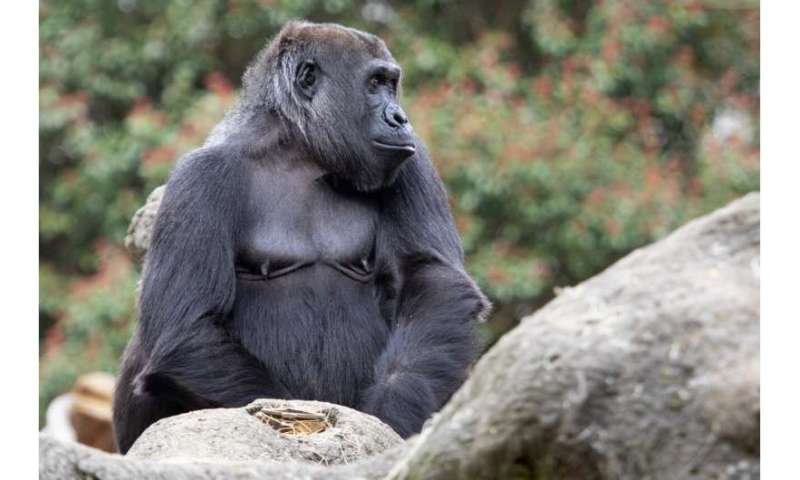Best of Last Week—Gorillas create new call, an artificial neuron, a synthetic chemical linked to liver cancer

It was a good week for the biological sciences, as a trio of researchers, two with the University of Georgia, the third with Zoo Atlanta, found that gorillas at Zoo Atlanta have created a new call for use in communicating with humans, specifically, those humans holding food. Also, a team of researchers from the Max Planck Institute for Evolutionary Anthropology, the Max Planck Institute for the Science of Human History, the British School at Athens and Temple University found evidence of bacteria that cause the plague and typhoid fever in the teeth of individuals from the Bronze Age, which could explain why two ancient civilizations failed. And a team with members from institutions in Taiwan, Japan and Australia, identified a new species of Bathonymus—a giant deep-sea isopod they found in the Gulf of Mexico.
In technology news, a team of researchers from Nanjing University of Posts and Telecommunications and the Chinese Academy of Sciences in China and Nanyang Technological University and the Agency for Science Technology and Research in Singapore, developed an artificial neuron that can communicate using the neurotransmitter dopamine. Also, a team at the University of California, San Diego, unveiled a perovskite solar cell with a superlattice structure that might surpass the efficiency of the so-called "perfect" solar cell. And a team with members from UCLA, UCSD, Peking University and Beijing Institute for General Artificial Intelligence developed a new AI system that is capable of explaining decisions that it makes to human users. And a team at The University of Texas at Austin developed synaptic transistors for brain-like computers using thin, flexible graphene.
In other news, a team at Boston's Children's Hospital developed a new, broadly neutralizing antibody that works against the SARS-CoV-2 virus. It is so broad that it is capable of neutralizing all known variants of the virus. Also, a small team at Los Alamos National Laboratory, discovered an error in math developed more than 100 years ago that is still used today in products such as TVs. Fixing the error, they suggest, could improve display devices and also improve color use in textiles and the paint industry. And finally, a team at USC's Keck School of Medicine, found evidence linking the synthetic chemical perfluooctane sulfate, which is found widely in the environment, to liver cancer.
© 2022 Science X Network